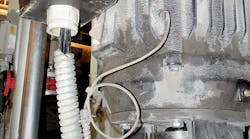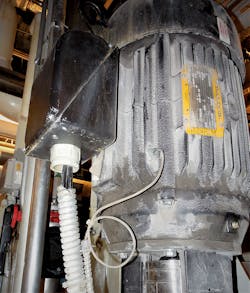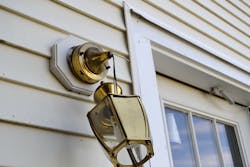All references are based on the 2017 edition of the NEC.
Indecisive Installer
It looks like this installer could not make up his mind on whether he should use metallic or non-metallic wiring methods for this motor. No worries, though, because he solved that problem by simply using both types. Of course, that solution caused some other problems — the most noticeable being the failed connection between the flexible metal conduit (FMC) and the non-metallic conduit connector. Fittings and connectors must be used only for wiring methods for which they are specifically designed and listed, as required by Sec. 300.15. My next concern is the lack of electrical continuity between the FMC and the metal motor. Section 300.10 requires metal raceways to be metallically joined and mechanically secured to metal enclosures, boxes, cabinets, and fittings in a manner that will provide effective electrical continuity. That certainly did not happen here. The lack of a fitting on the end of the FMC also has me concerned about any sharp metal edges eventually wearing through the insulation on the conductors because of all the vibration from this 40-hp, 480V motor. A short circuit or ground fault could create a catastrophe. A properly installed FMC connector would have been a good choice for this installer.
Dangling Danger
I spotted this dangling disaster while enjoying a pool party and cookout with friends over the summer. This broken luminaire is certainly no reason to party, however. It needs to be replaced. This situation can create a dangerous shock hazard. Imagine if the insulation on the energized ungrounded black wire at the dangling portion of the luminaire was damaged and in contact with the now ungrounded and unbonded metal frame of the luminaire. Now imagine what might happen if a person standing on the ground were to touch this energized luminaire. I don’t like to think about those scary scenarios, especially if a small child was involved. This broken luminaire is most certainly a violation of Sec. 110.12(B), which prohibits any damaged parts that may adversely affect safe operation of the electrical equipment. I think a broken luminaire, with exposed energized conductors certainly meets that criteria. Since this luminaire is broken, the dangling portion no longer complies with the grounding requirements found in Sec. 410.44. It also appears that the canopy of the luminaire has pulled away from the house and the box that it was secured to. This leaves the branch circuit wiring exposed to rain and moisture and elevates the danger level even higher.






